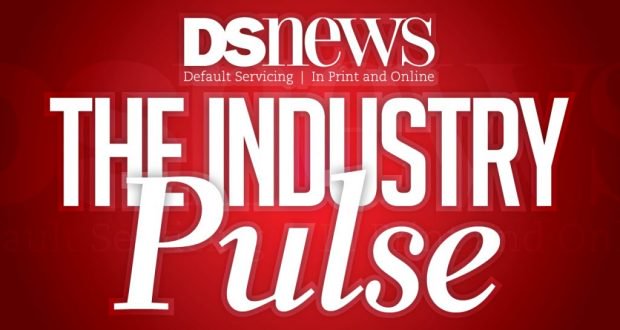
Editor’s note: This feature originally appeared in the May edition of DS News, out now.
Despite mixed reviews for what 2019 has in store for the housing market, the combination of a strong economy, low unemployment, and rising wages are motivating consumers to buy, and a significantly greater number of those buyers are poised for long-term success as mortgage loan default and delinquency rates continue to fall.
Delinquency rates haven’t just fallen—the Mortgage Bankers Association’s recently released National Delinquency Survey reported that they had dropped to an 18-year low in Q4 2018.
A report from CoreLogic looked at how today’s delinquency rates are influenced by the timeframe of their loan origination. Approximately 67% of conventional loans that were seriously delinquent in September 2018 were originated between 2003 and 2009, compared to just 23% of seriously delinquent conventional loans originated between 2010 and 2018. This data points to the significance of market conditions surrounding the 2008 housing crash and its impact on delinquency rates.
The mortgage industry has made great strides since that crisis—investing in technology, enhancing existing tools and platforms, and increasing communication efforts to fortify sound, practical residential loan servicing practices to help better manage risks, maximize cash flows, and minimize defaults. These efforts have been deliberate and specific, focusing on early intervention and better ways to bring technology into the fold.
The evolution of those practices is, of course, continuous. Today, banks and mortgage servicers are faced with a landscape characterized by changing regulations and increasing investor demands for transparency and accountability. These new expectations require mortgage industry stakeholders to seek multiple levels of communication and accountability. This includes ensuring that operations are compliant with regulations to avoid legal and headline risk as well as assurances that investment values and returns are maximized.
To do that, servicers need both information transparency—What is the borrower’s loan schedule? What is the loan’s history? What possible escrow changes would affect the loan?—and technology to improve both the servicer and borrower experience. Communication also needs to happen between mortgage professionals and borrowers in clear and understandable terms. This, in turn, will enhance both the borrower experience and the likelihood of loan repayment.
Using Technology
In their infancy, servicing platforms were primarily designed as accounting systems for receiving funds and calculating loan and principal balances. Today, in addition to the accounting aspects of servicing platforms, new, more automated technologies can spot changes in loan and transaction performance sooner, ultimately providing earlier intervention for proper issue resolution and risk avoidance. Risk surveillance analysts are required to monitor a breadth of mortgage activity to identify potential problems and risks before they happen. With proprietary technology platforms, analysts have been able to provide clients with independent, third-party assessments of asset and counterparty performance, which are promptly communicated to the servicer who can then use this information to determine which options are best for the borrower.
These technologies are proactively becoming the kick-off to default communications that help loan servicers in real time to mitigate loss severity, increase return on investment (ROI), and strengthen the value of a loan portfolio.
Technology is also arming surveillance professionals with analytics and reporting. Some of these technologies create summary dashboards and scorecards, and slice and dice reports focused on data such as delinquencies, losses and severities, prepayment speeds, default timelines, value declines, and analyst watch lists.
Internal technology and digital communications are providing default servicing professionals with the ability to communicate concerns and risks much sooner. Providing this key information at the forefront of the process has been a major contributor to the decline in default rates.
Servicer Calling Servicer
Historically, loss mitigation has been less than perfect, with the structure of the system being largely to blame. Sitting in silos with zero transparency, it was easy to lose track of information and details on individual loans over the course of the loan’s history. These problems became exacerbated when loans changed hands. If an error was detected, servicers would spend hours, and sometimes days, tracking down past servicer packages, learning about a loan’s history and other research to piece together all the necessary details, effectively wreaking havoc on the process of trying to mitigate the loss.
Thankfully, in recent years, due to new regulations and checks-and-balances, innovations in database technology are now enhancing communication among lenders and debt servicers, enabling them to obtain, store and transfer data effectively and easily among one another.
Borrower information is now being filed and stored in regulated formats, significantly improving the ability of servicers to assemble multiple pieces of information about consumers. This helps create an easier and more cost-efficient solution for assessing a given loan for borrowers and working directly with them to help resolve delinquencies.
Early Intervention Saves the Day
Twenty years ago, email was in its infancy. About 10 years later, texting was becoming the preferred communication method. Today, nearly all communication has gone digital, with consumers managing much of their communications on their computers, cellphones, and tablets. This reliance on technology has paved the way for servicers to evolve borrower communications by utilizing the most effective communication channel(s) for a given borrower.
Servicers are no longer solely dependent on snail mail if the borrower’s ability to make payments changes. Notifications about a borrower’s loan happen in seconds, not days. Servicers are thus able to provide earlier intervention through these more immediate methods, as well as contact borrowers using several communication channels to alert them that there is a risk of default. A key part of this early intervention plan is to offer support and assistance by providing a borrower with their available options. Whether they opt for short-term forbearance, loss mitigation, a short sale, or anything else available to them, borrowers can choose the option that works best for their circumstances.
Better communication between servicers and borrowers has also allowed for faster application processing. In the past, it took days just for borrowers to receive an acknowledgment letter that their application for a particular default option was received. Today, applications are being processed and decisions are being made within as little as five days. Borrowers are no longer stuck waiting around to find out their next steps and are moving forward through the remediation process at a faster pace.
Help From Regulation
One of the major changes since the 2008 housing finance crisis from the Consumer Financial Protection Bureau (CFPB) is the need to provide clearer messaging. It seems like these regulations are working. Evidence suggests that the CFPB rules have kept mortgage delinquency rates down and borrowers out of the hole. These statistics are worth noting.
In Q4 2008, the single-family residential delinquency rate was 6.59%, according to national data from the Federal Reserve Bank of St. Louis. By Q1 2010 that rate had increased to 11.54% However, by Q4 2018, the delinquency rate had dropped as low as 2.8%. One factor contributing to this lower rate is regulation by the CFPB, which requires,
among other things, that servicers provide borrowers with information about how to get help in order to repay the loan.
Experts agree that communication is vital to the default process and has contributed to the significant reduction in default rates, particularly since the housing crisis. Whether it is communication between servicers and borrowers, servicers and servicers, or just better internal organizational communication, the efforts made to improve in this area collectively have a direct, significant impact on the housing industry.
As technology advancements improve across the entire mortgage spectrum, communication should continue to improve between all stakeholders in the mortgage process. Higher consumer financial confidence, historically low unemployment rates, and technology that improves monitoring and communication are all creating a historic opportunity to maintain low default rates for the foreseeable future. Of course, this opportunity will still require servicer vigilance and the willingness for all parties to communicate openly and transparently to help eliminate the chances of returning to the high-risk years of a decade ago.




